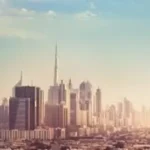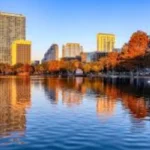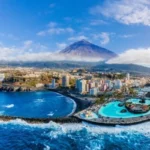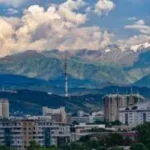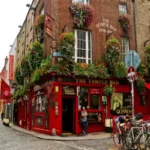Sustainable Growth: How Dubai Islands Balances Eco-Innovation and Profit
As the global property sector shifts towards sustainability, few projects demonstrate this change as boldly as the Dubai Islands. This multi-billion-dollar development on the northern coastline of Dubai is not just expanding the city’s real estate frontier—it’s redefining how large-scale, mixed-use islands can be developed in harmony with environmental goals and long-term economic value.
Set against the backdrop of a shifting global climate and investor preference for ESG-compliant assets, the islands in Dubai represent more than a real estate opportunity; they are a case study in profitable sustainability.
New Model for Coastal Development
Comprising five interconnected islands, the Dubai Islands project spans over 17 square kilometers and is designed to host residential communities, luxury resorts, cultural venues, and marine activities. While past development in Dubai was often driven by spectacle and scale, Dubai Islands adopt a more nuanced approach, blending livability, infrastructure efficiency, and climate responsiveness.
Each of the islands integrates green public transportation, low-impact architectural principles, and robust marine conservation measures. Importantly, developers have shifted from car-centric layouts to pedestrian-first urban planning—prioritizing shaded walkways, cycling paths, and coastal promenades to reduce reliance on automobiles.
One of the Dubai Islands projects that encapsulates this vision is Haven Bay. This premium residential complex is nestled along waterfronts and bordered by local flora. Haven Bay combines minimalist architecture with nature to provide residents with a stronger connection to the outdoors and improve their well-being.
Profit Through Sustainability
For developers and institutional investors, the business case for sustainability is no longer aspirational—it’s operational. Green buildings typically attract premium valuations and offer reduced maintenance costs, making them appealing to both end-users and rental portfolio managers.
The Dubai Islands project exemplifies how ESG investments can yield measurable returns. According to regional analysts, sustainable communities in the UAE command resale values that are 7–11% higher than comparable non-green properties. Additionally, eco-conscious tourism infrastructure—including the marina and wellness-focused beachfront hotels—aligns with Dubai’s national target of attracting 40 million hotel guests annually by 2031.
This is not merely about ticking regulatory boxes. Dubai Islands’ master planning incorporates biodiversity zones and artificial reefs to support marine life—a differentiator that appeals to ecotourism markets and green investors alike. It also provides a framework for long-term resilience, particularly against risks such as sea-level rise and extreme weather, both of which are critical concerns in coastal real estate markets.
Role of Policy and Global Investment
Sustainable mega-projects like Dubai Islands benefit from robust policy support. The UAE’s Net Zero 2050 strategic initiative has laid the groundwork for environmentally responsible infrastructure, mandating green building standards and incentivizing private sector participation.
Simultaneously, Dubai’s real estate market remains one of the most liquid in the MENA region, and Dubai Islands are strategically positioned to capture this momentum. With sovereign wealth funds and high-net-worth individuals increasingly incorporating ESG filters in their portfolio strategies, the islands—and particularly high-end developments like islands in Dubai—are attracting attention as anchor assets.
Crucially, Dubai’s free zone structure and investor-friendly legal framework make it easier for international developers to engage in joint ventures or acquire land plots with long-term leasing rights. This structural flexibility further reduces barriers to capital flow into sustainable property sectors.
Future-Proofing Through Innovation
As urban centers grapple with climate imperatives and livability pressures, projects like Dubai Islands offer a glimpse into the future of profitable urbanism. They show that luxury need not come at the expense of ecology, and that large-scale developments can be both market-viable and environmentally responsible.
From advanced materials that reduce heat gain to smart irrigation, and rainwater harvesting systems that irrigate green spaces, the technical design of Dubai Island and its infrastructure reflects a commitment to continuous innovation. And it’s this innovation—not just marketing—that ensures sustainability is embedded in the business model, not just the brochure.


